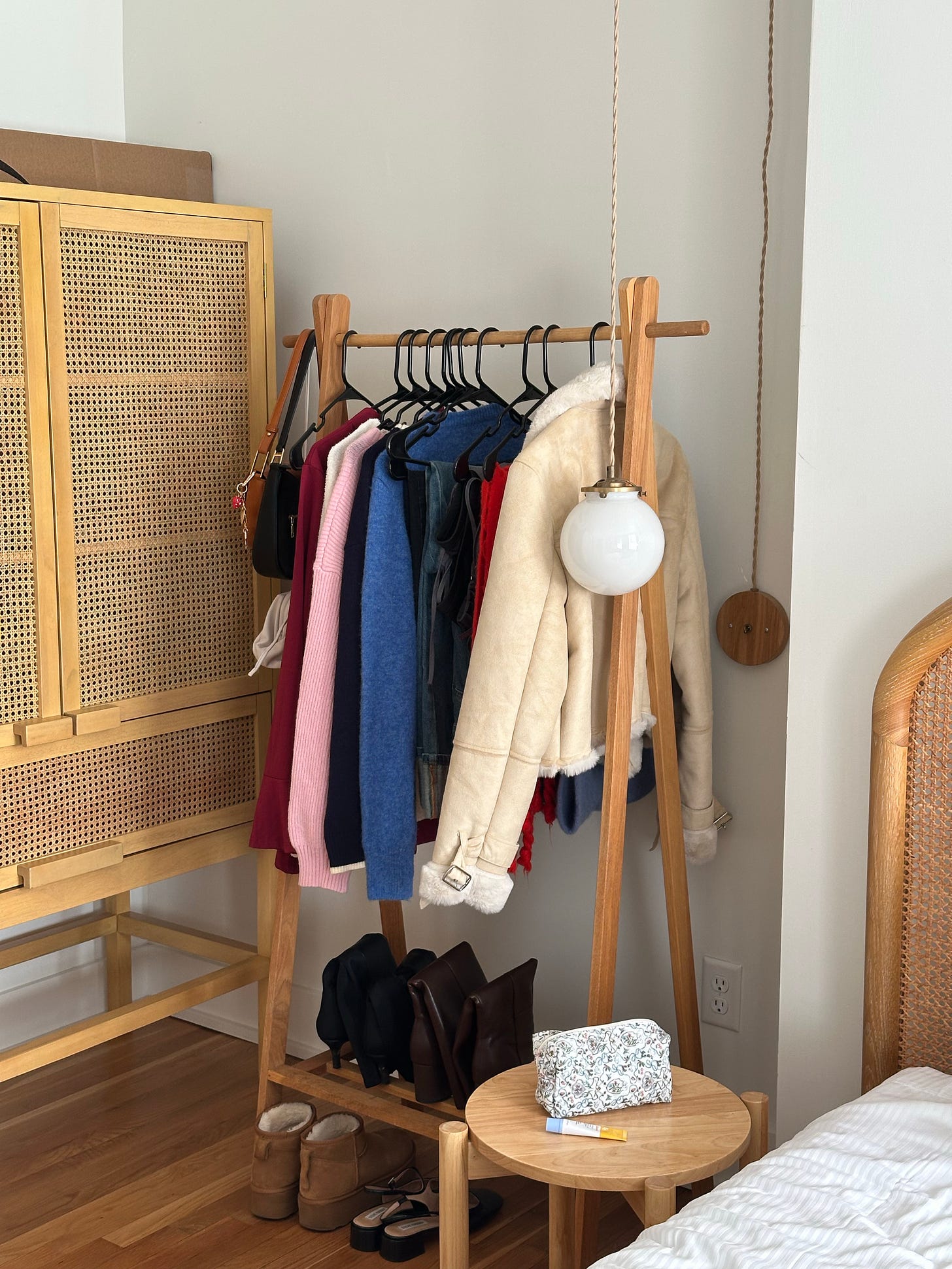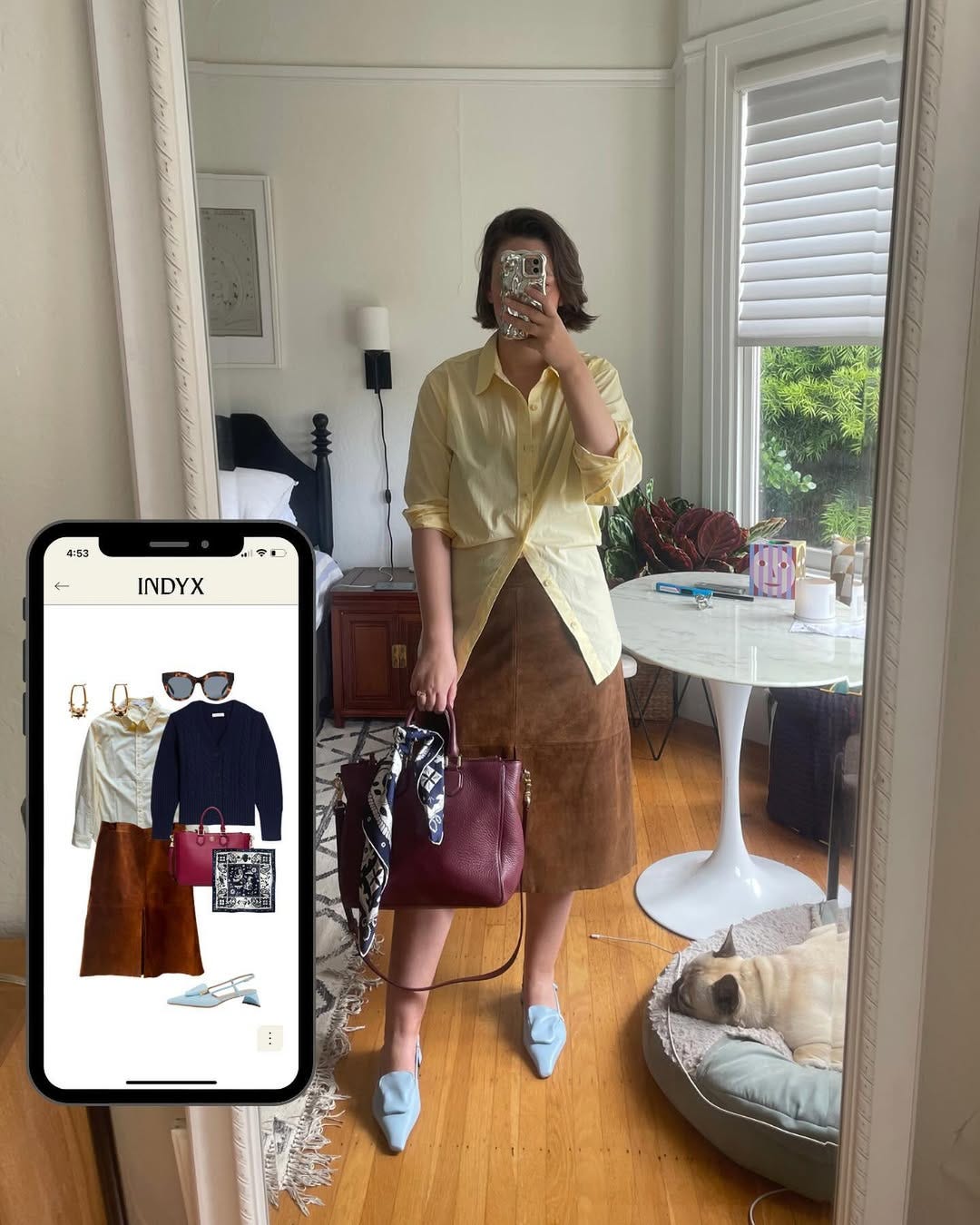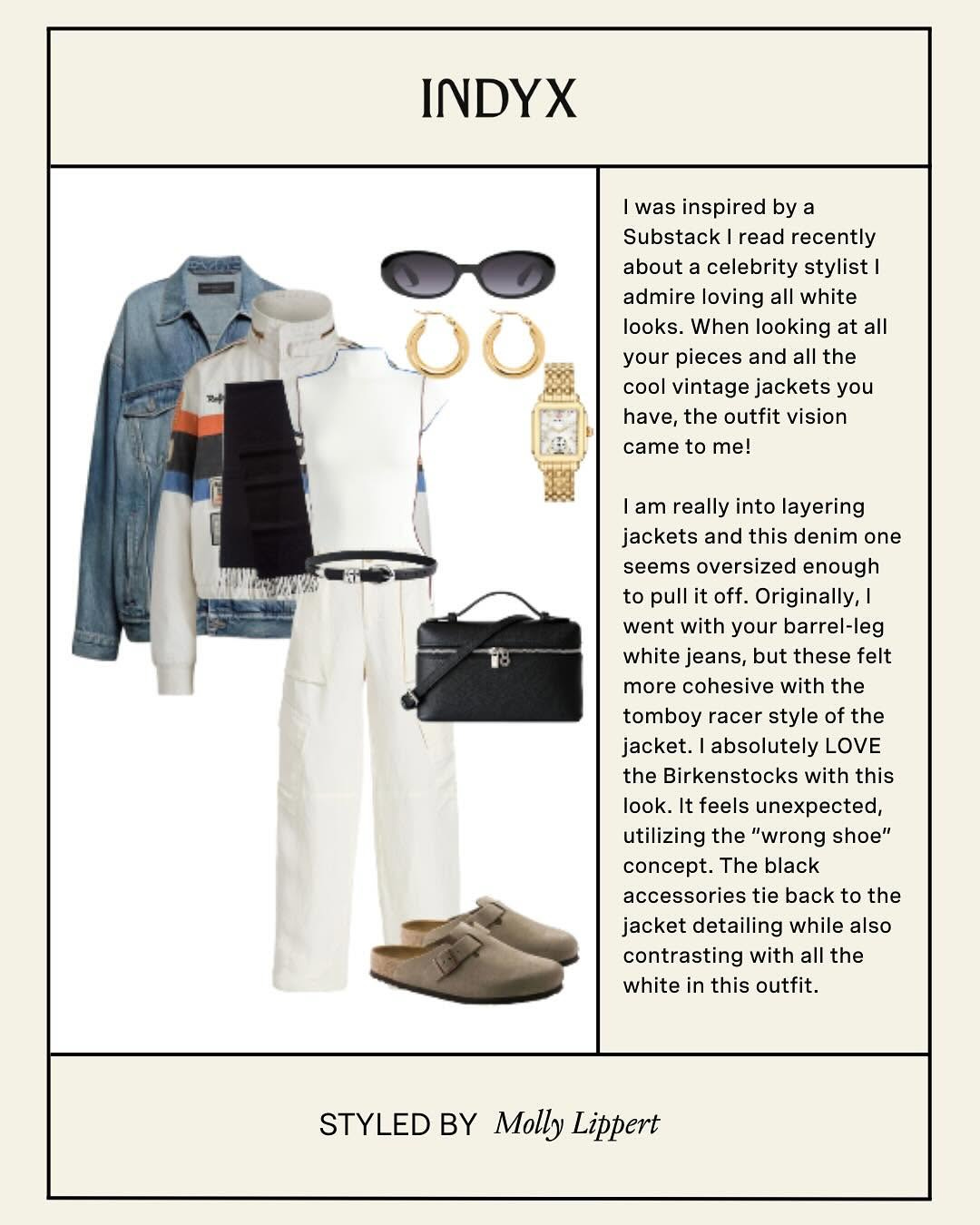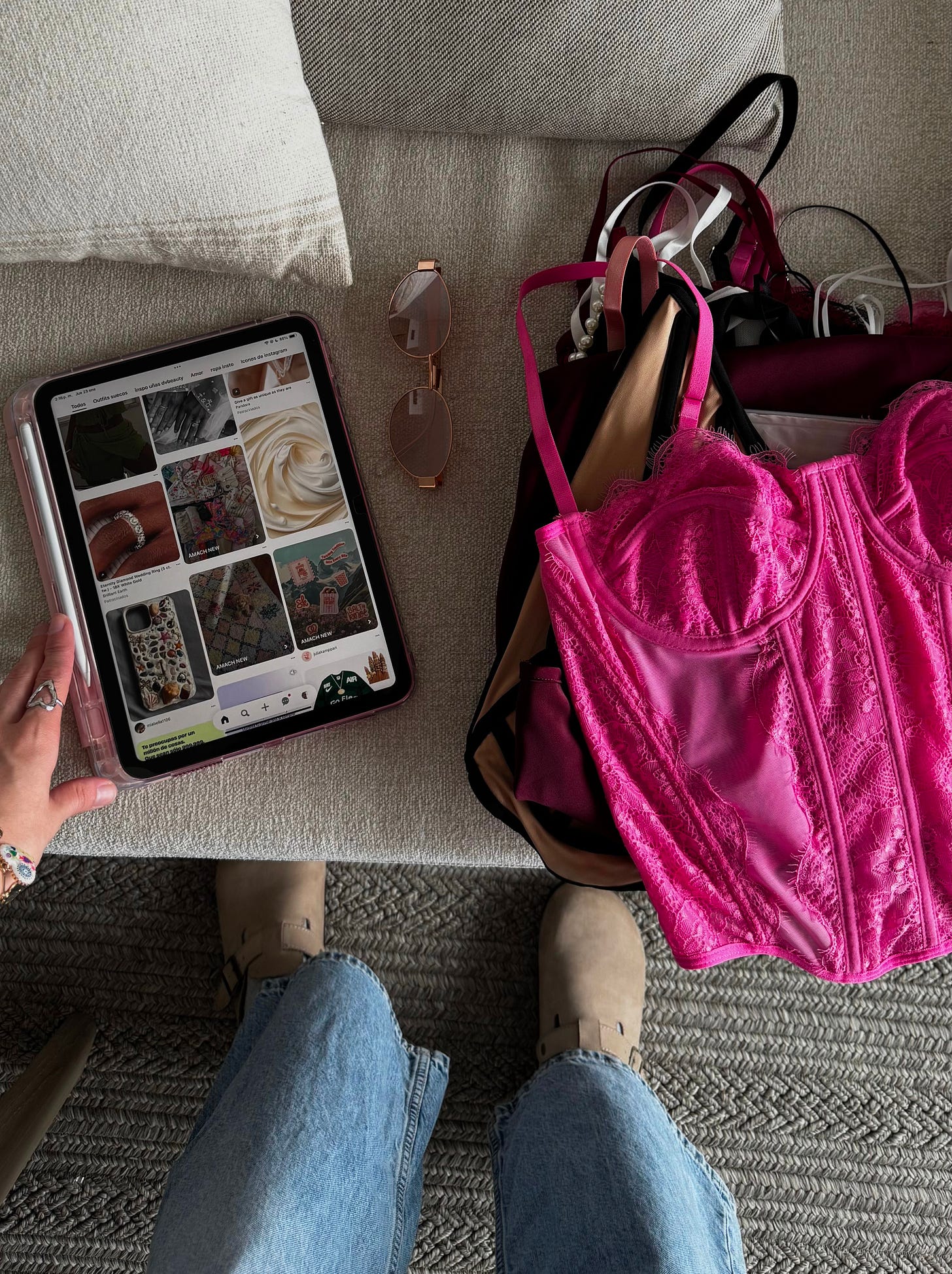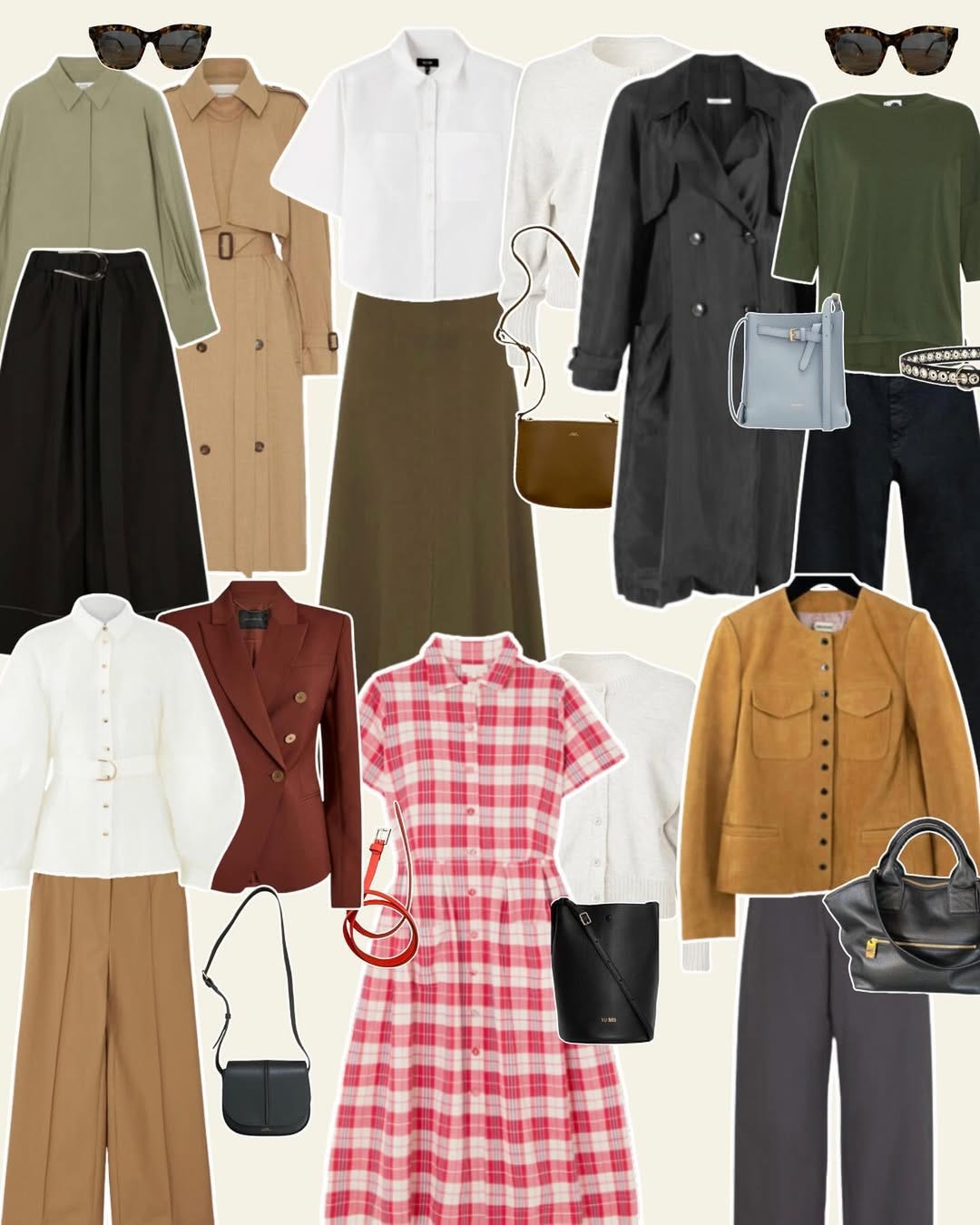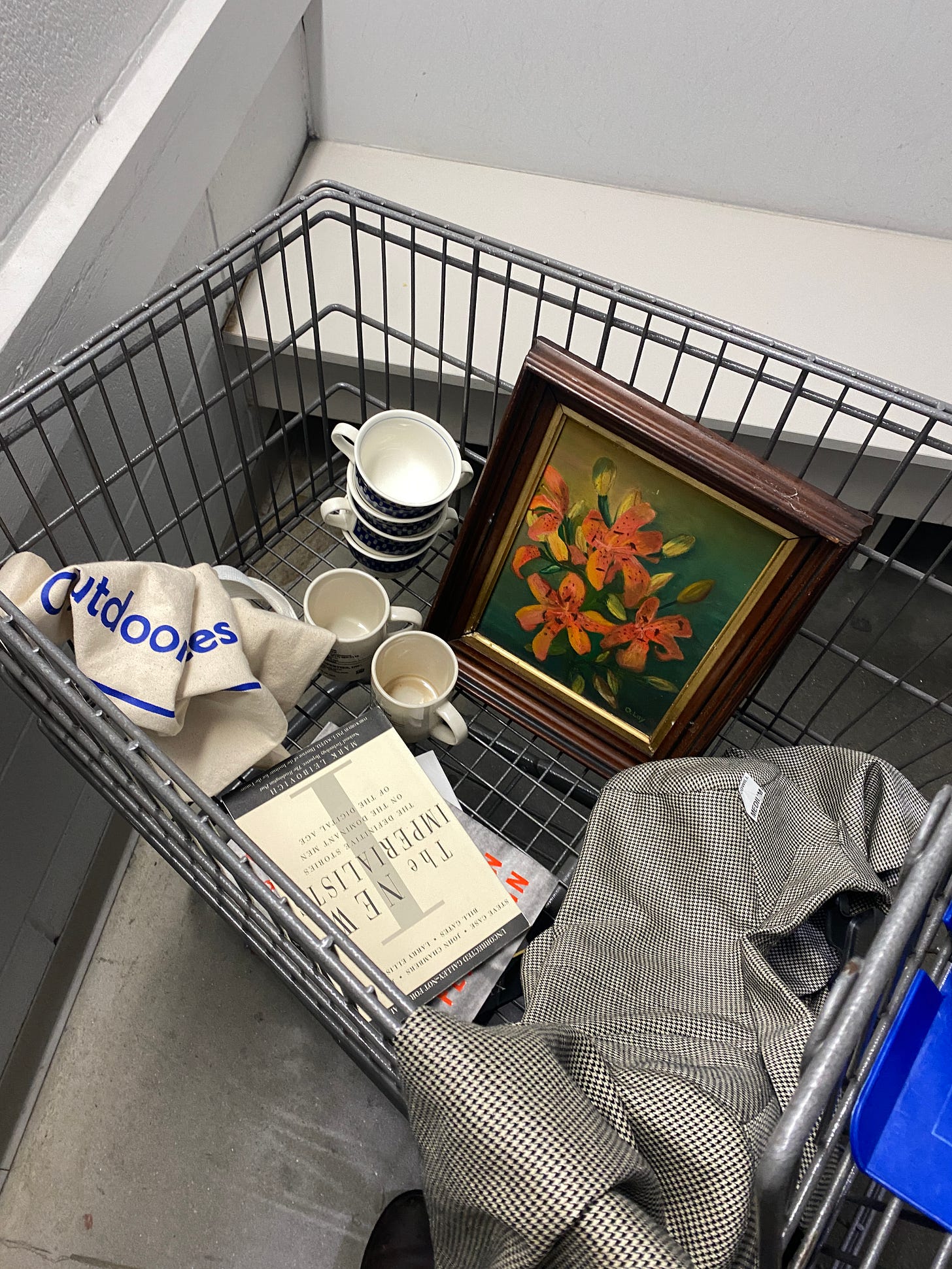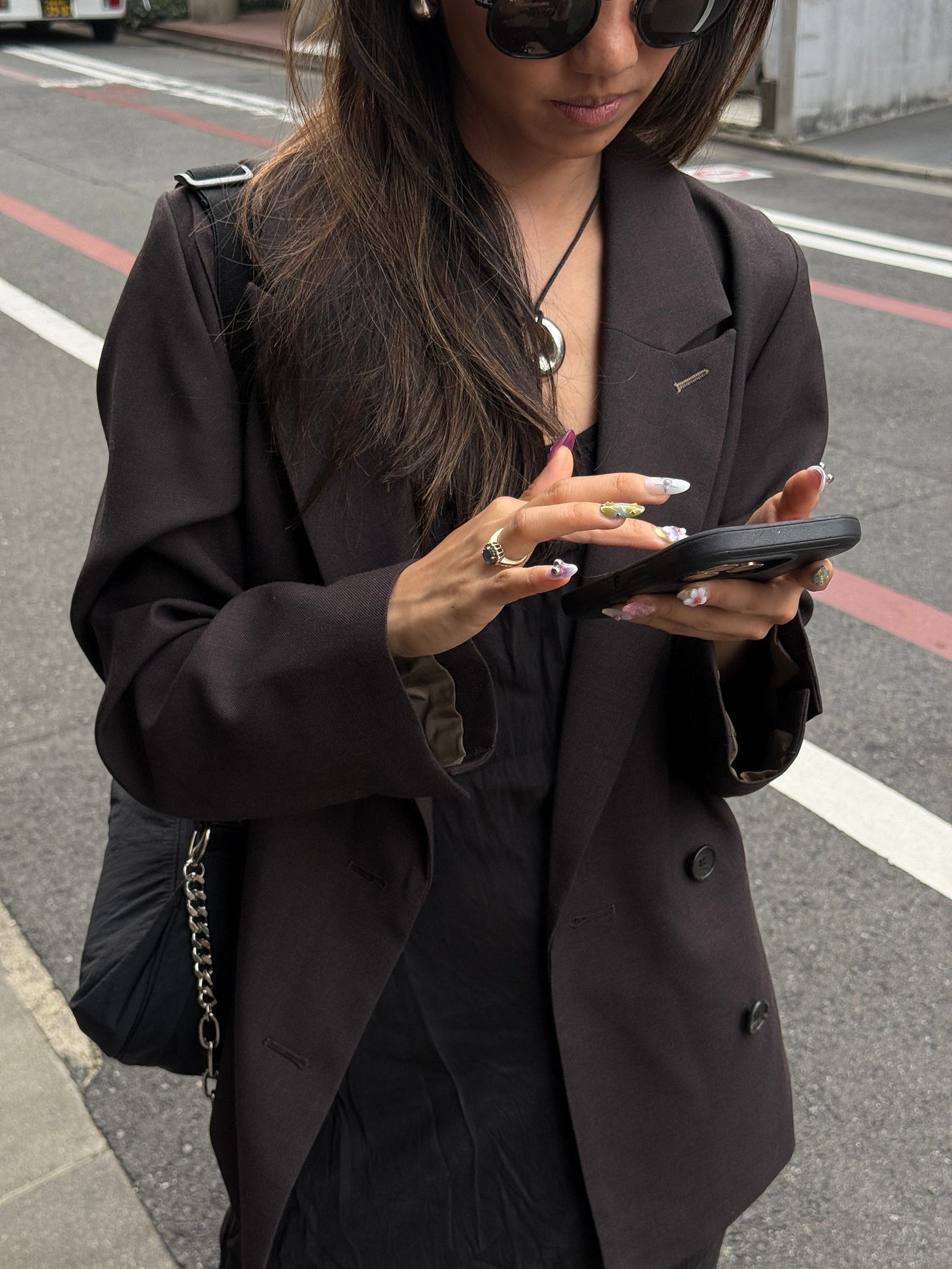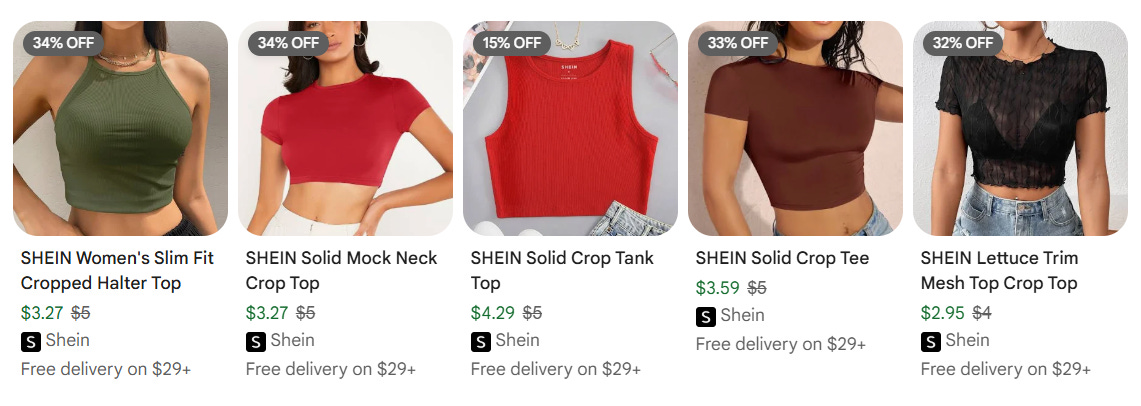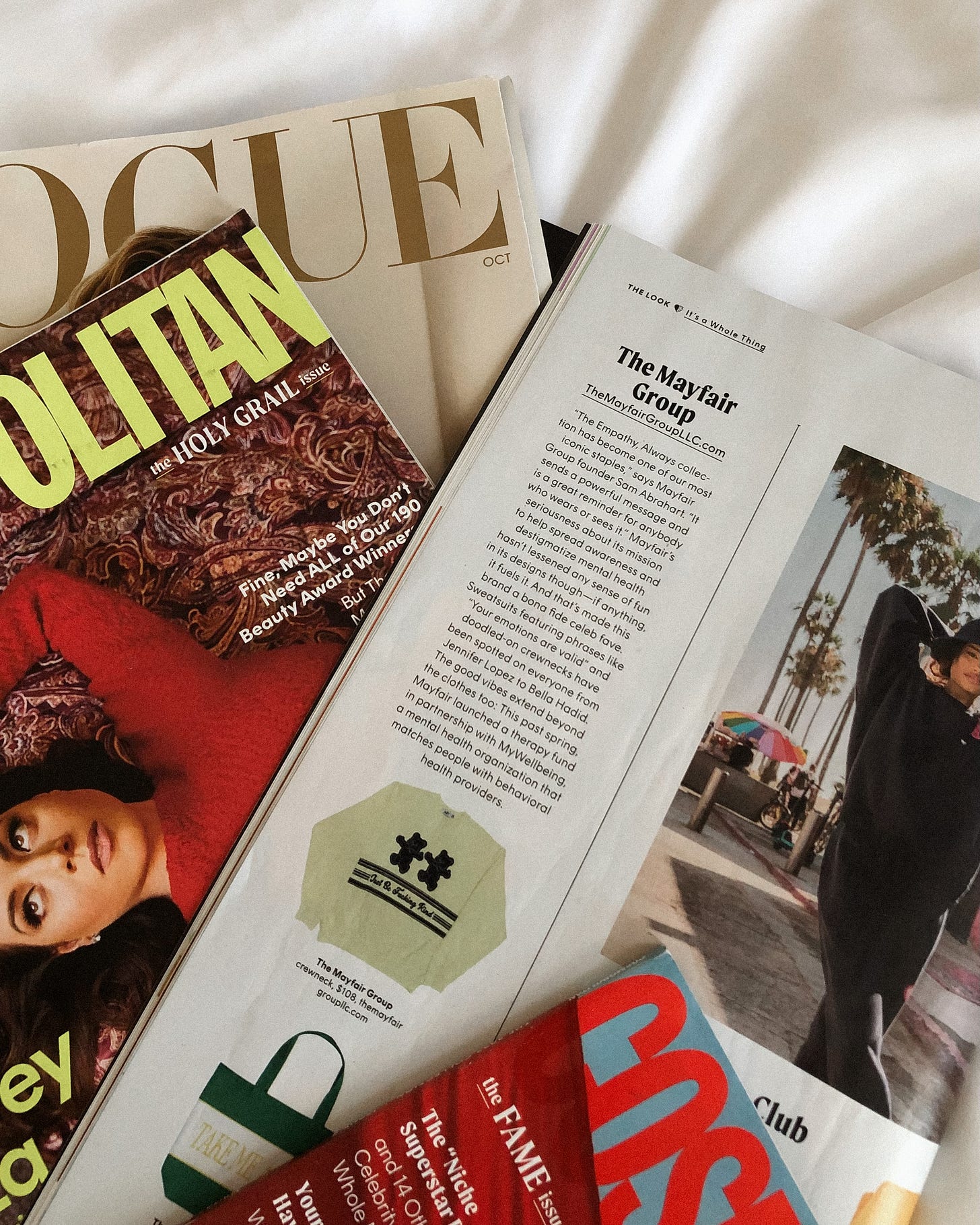It's Still Too Hard to Resell Clothes
chat with Devon Rule, co-founder of Indyx, on making circularity irresistible.
Expert insights and reported deep dives into what works (and what doesn’t!) in resale, delivered right to your inbox. I’m Emily Stochl and this is Pre-Loved 🎤 an indie media platform about secondhand fashion!
Please become a paid subscriber today. I cannot sustainably produce Pre-Loved without your financial support:
You’re standing in front of a closet full of clothes, but you feel like you have nothing to wear. We’ve all been there!
Likely because we’ve been taught to focus so much on where we shop, but this closet-full-of-clothes moment shows, we need to spend some time rethinking how we shop. Buying less, but with more intention, can actually create a more enjoyable fashion experience — making slow fashion feel like a net positive rather than a sacrifice.
Yet, while secondhand shopping is growing in popularity — we love to see it! — reselling secondhand clothes is another hurdle; one we have to tackle to complete the circularity eco-system.
Admit it: just outside that closet-full-of-clothes, you also have a ‘to sell’ pile accumulating, waiting for the day you decide to actually move on the pieces you never wear. So, what’s stopping you?
I get it, it still takes quite a bit of effort to resell your clothes, and if the average person perceives the payout to be too low, the resale economics just won’t work.
Enter Indyx, a one-stop digital wardrobe app with a vision to digitize our closets, helping people better understand the value of the clothes they already own.
In this letter, I talked to
, co-founder of Indyx, and Head of Growth. I asked her how we shift our shopping mindsets, make resale easier and more financially-worthwhile, and what inspired her to (joyfully!) view her closet as an asset.…Welcome to “Making Circularity Irresistible” 🎤 with Devon Rule:
We want to hear a little bit about why you wanted to create Indyx!
My co-founder, Yidi, and I have similar backgrounds — we came out of the fashion industry, but on the strategy and operation side. On a personal level, we both had the relatable problem of a closet full of clothes and nothing to wear.
Which is so incredibly frustrating, especially given the time and energy we all put into our closets. To still feel that way, it just feels wrong, doesn’t it?
The solution the industry has given us is to just keep buying more and more stuff. But, we've all been trying that and that's how we got into this situation with the closet full of clothes! Clearly something else is needed to help us figure out how to wear all those clothes we love to buy.
How do you – personally – define slow, sustainable, or circular style?
My semi-hot take, I guess, is I worry less about where I am shopping, and more about how I am buying. Am I buying things that are truly right for me? That I truly love, and will wear for a long time? Of course, if I can buy from a place that is smaller, more ethical, or more sustainable, I will. But, only if it fulfills the requirements I need to actually wear the dang thing for a long time!
“I think we need to paradigm shift a little bit. We can't keep our same shopping habits, and just replace where we are shopping from. We also have to take a hard look at how we're shopping.”
For going on 3-years now, I’ve been on a “permanent,” personal low-buy, where I only buy one new piece of clothing a month, or 12 all year. Which, for some is maybe a lot still, but for others, not. It felt attainable for me. And has really helped me reframe just how fast [fashion] is going.
Putting a limit on it allowed me to actually focus on what will make the biggest impact in my closet.
The question I always get is, “where should I shop instead?” So I totally get where you're coming from.
Right that's a question, but it's not the only question!
The other shift we like to think about at Indyx, is viewing your closet as an “asset,” which — I know you can go too far down the path of “girl-mathing your closet” — but I do think you can meet your own goals, around personal happiness and joy getting dressed, by optimizing your closet. And those are perfectly valid goals!
We’re up against the fact that people like to buy new stuff. How do we make slow and circular fashion habits as easy, attractive, and inevitable as shopping new?
To your point, people are selfishly-motivated, right? We've been on this kick for a while now saying, ‘you should make sustainable choices just because you're a really nice, wonderful, altruistic person.’ Right? And, that might work for some people. But it doesn't work for enough people.
At Indyx, we’re somewhat closely linked to the ‘No-Buy-Low-Buy’ Movement, and sometimes I feel like No-Buy-Low-Buy is portrayed as a bit of a bummer…
Like it’s a “resolution,” and like you’re giving something up?
Yes, exactly! Like you're becoming a monk: I'm giving this up so maybe I can be on a more enlightened path in the future. That’s not really for me. I think it needs a rebrand.
Personally, with my ‘12 things a year,’ I have actually found so much freedom and joy from being able to make better choices. It’s a net positive to my wardrobe, and to how I feel. And so, it's not limiting; it's actually, like, fun — fun and joyful!
And also less stressful?
Totally! Coming back to the industry, the only tool the fashion industry has given us to achieve style is buying something else, right? We’re primed to believe the ‘next offering’ will put us on a different path.
But, another goal could be, like ‘I want to feel good getting dressed in the morning.’ Because everybody has had that stressful moment, standing in front of the closet, not knowing what to wear. So you can think of it as a positive shift to eliminate that stress.
Also, learning your purchases don’t have to be a sunk cost. For example, when I talk to — especially my mom's generation — they're like, ‘I never think about resale. If it’s in my closet, why would I get rid of it?’ Basically they will just feel guilty forever about not wearing something.
But I try to tell them, ‘you actually have a tool to do something about this,’ which is resale!
Sure, you can put all the thought into what you buy, making sure it's the right thing — but, mistakes happen! And if that does happen, resale is your option to move forward. You can recoup — maybe not all of what you invested, but a good portion, and probably more than you think!
Secondhand shopping has become mainstream, thankfully! But there’s still roadblocks when it comes to reselling secondhand clothing.
What are some of those pain points, and why does this matter?
Happy to talk about this! It is currently way too hard to sell secondhand for most people. You basically have two options:
You can send it to a “managed reseller,” like a RealReal or ThredUp.
Or you can list on a “peer-to-peer” platform, like a Depop or Poshmark.
With peer-to-peer, there is a fair amount of work involved in the listing, right?
You have to take something — at the moment that you are least excited about it, the moment that you've already decided ‘I want this thing to be gone! — and now you have to take photos, create the listing, and manage the sale. Are you going to reduce the price? Are you getting offers? We all know this process…
Or, flip side, you can decide to send it to managed resale, where they’ll do all that work for you, but you only get 10-20% of the list price, which is a bummer, right? It makes the whole thing less appealing.
Both re-selling options have pros and cons, and if people aren’t reselling, that's a barrier to the whole circularity system, right?
Yes, and ThredUp’s 2024 Resale Report even points to this:
“More than half (52%) of all U.S. consumers shopped secondhand last year. However, only 25% of us sold secondhand clothes last year.
That’s a major gap, and it means that resale today is fundamentally supply-constrained. There’s not enough stuff being sold secondhand to fulfill the demand of all the people who now want to shop secondhand.”
from ’s Substack ‘Brand Panic’
We need more people to want to sell secondhand. And so, we need to make that process easier.
How can we do that?
I think the big barrier is the digital record, the listing.
“You have to take something — at the moment that you are least excited about it! — and now you have to take photos, create the listing, and manage the sale. Are you going to reduce the price? Are you getting offers? We all know this process…”
But retail brands create “digital records” all the time, their digital product pages. They put time and energy into shooting the product professionally. They have whole e-commerce teams and merchandising teams writing the descriptions and putting them online. In the consumer’s hands, this is where Indyx comes in — we make it so you already have this digital record.
When you buy something, what if you just captured all that product information, at the moment you’re most excited about the thing? When you are ready to own it, figure out how to wear it and style it.
Then, that information stays useful to you the entire time you own it. And when you want to resell, you already have the data. Maybe you need to snap a few extra pics to show the current condition, but you have all the product information.
It’s wild that resale is so supply-constrained when so much clothing exists – it seems very counter-intuitive. What’s the deal?
Well, there's two things. First, yeah, there's so many clothes. But where are those clothes? A lot of it ends up in thrift stores like Goodwill, right? Or, some other physical location — a place you can take stuff to in a trash bag!
And there might be some circularity there, but it's constrained to whoever happens to walk in that day, see that item, and buy it. There might be someone who wants it, but is it going to find the right person before even more donations come in? If not, it has to go somewhere, to make more space. And so, it gets “sent out the back door,” as you know, likely ending up in the Global South.
Whereas, if the garment is listed online, it can theoretically reach a much wider audience. That's one key reason resellers exist — they are currently doing market arbitrage, taking things worth reselling that are sitting somewhere, and exposing them to the right person.
So, the first thing is all this stuff is stuck in limited places. The second problem is, well, not all theoretical resale supply is good resale supply…
Exactly! What can we learn from this fact, that we think of our clothes as being “too low value” to put in the effort of reselling them?
Right, there’s like a fundamental value problem; a bit of collective delusion, even, where we think ‘oh yeah, theoretically, there's a person out there that wants all my stuff.’
I think that gets especially dangerous when it’s used as an excuse to avoid looking at your buying patterns more critically, like, ‘oh, well, sure, I could buy it, and if I don't like it, I'll just get rid of it. I’ll give it to Goodwill and someone else can use it.’ But, if that doesn't actually happen, then it’s a problem. And if we're all thinking this, it's like a ‘tragedy of the common’ situation…
There will not be that person out there, because we’re all trying to offload things we didn't make good decisions about.
And then there is just a fundamental economic floor for making resale work…
Yes, say you have a crop top from SHEIN you bought for $5 bucks. In theory, there's someone else who might want to wear that crop top, right? But is there someone out there that would be willing to pay $5 for that secondhand crop top? (probably not).
And even if there was, you’d have to ship it to them. Say shipping costs $7. Even if you sold the top for $0, instead of $5, and the buyer just paid shipping, they’re still paying $2 more than what you paid for it!
On top of that, you’re not making any money from that sale, you’re just losing money on time wasted. That inventory is never going to work, it just isn't.
While that's an extreme example, you can extend it to anything with around, say, a $20 value. That's kind of the minimum you see in online resale, and there's a reason: an item needs a certain resale value for the transaction to even make sense.
What could be done about that?
If we can make the listing process easier and faster, maybe your floor sale could go down, to be more worth people's time. But there still will be a floor, always.
More importantly, we have to value clothes more. Resale works better when the items have more value.
That’s why the major resale and consignment markets prioritize designer and luxury first, right? The major resale platforms are pushing towards higher value inventory, and putting incentives into place that help that. [According to NYTimes]:
“In November 2022, the RealReal overhauled its consignment policies, which includes no longer accepting merchandise under $100 as the company focuses on acquiring items that provide higher margins; limiting direct buys; and offering lower commissions for lower-priced items.”
Who, in circular fashion, has a role to play in addressing this problem? What sorts of messaging could be helpful for people to hear?
Indyx can help, tangibly, with the digital listing. And philosophically, by helping us value clothing more. We think both things are important!
And to be clear, we’re not quite there yet with integrating resale listings, but it's our vision to put resale into the platform. Until then, the seamless digital record can help make the resale process easier.
Going back to the idea of ‘seeing your closet as an asset,’ if we were all more aware of the resale value of things that we own, that probably would help, and I think tech can help solve that.
Wouldn't it be cool if you could see a real-time live estimate of the resale value of items in your closet? Then you could notice for yourself what becomes worth it, and what doesn't. That could also grease the wheels a little bit, say I’m not wearing something very much, but you told me ‘by the way, that thing in your closet you’re not wearing, you could sell it for $100!’ — or even like, ‘hey, you have an offer for $100 sitting in hand, would you want to sell that today?’ That could help accelerate things.
And, also, help people realize when they buy better, the value retains.
“We have to value clothes more. Resale works better when the items have more value.”
What’s a fashion mindset that you'd like to see go away?
Shifting how we present all of this from being a purely punitive thing like, ‘bummer, we have to shop less!’ to instead being an opportunity: if you shop less, maybe you can afford to buy more expensive things? Quality over quantity!
As long as — and I think this is key! — you are able to make the right choices for you, and your personal closet.
Thanks for reading Pre-Loved! You can find me across the internet on Instagram, TikTok, and Threads! 💛 - Emily
Want more ways of making circularity irresistible? Try ‘How a Sustainable Baddie Approaches a Style Challenge’ & ‘7 Timely Takeaways from ThredUp's 2025 Resale Report.’
**This interview has been edited for length and clarity.







